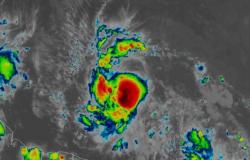OfHealth editorial team
It is one of the most widespread arboviruses in South America; it spreads through the bite of insects, especially mosquitoes and midges
It was diagnosed in Veneto on first case in Europe Of fever Oropouche in a patient with a recent history of travel to the tropical Caribbean region. This was ascertained by the Department of Infectious, Tropical and Microbiology Diseases of the IRCCS Sacro Cuore Don Calabria of Negrar, which reported the case to the health authorities and the local health authority responsible for the Region and to the international information and monitoring services. The virus was isolated in the Department’s BSL3 laboratory, the first step towards development specific diagnostic tests and studies on the ability of potential vectors to convey the virus (mosquitoes and midges) also spread by us.
Oropouche fever, what it is and where it is widespread
There Oropouche fever is caused by the virus of the same name (OROV) – discovered in 1955 in the blood of a forestry worker from Trinidad and Tobago -, usually widespread in the Amazon region, which can be transmitted to humans mainly through the bite of the midge Culicoides paraensis.
Dr. Federico Giovanni Gobbi, director of the Department of Infectious, Tropical Diseases and Microbiology of the IRCCS Sacro Cuore Don Calabria of Negrar explains: «What is most relevant is that it is a virus that is transmitted to humans by insect bitesin particular midges and two types of mosquitoes (currently not present in Italy). Oropouche fever is one of the most widespread arboviruses in South America, with over 500 thousand cases diagnosed from 1955 to today, a number that is probably underestimated given the limited diagnostic resources available in the area of diffusion. From the latest epidemiological update – specifies Dr. Gobbi – there have been more than 5 thousand cases of Oropouche fever, between the end of 2024 and 2024, in Bolivia, Brazil, Colombia and Peru, recently also in Cuba”.
Symptoms
But what are the main symptoms of Oropouche fever? The doctor explains Concetta Castilletti, head of the Virology and Emerging Pathogens Unit of the IRCCS Sacro Cuore Don Calabria of Negrar: «The symptoms, which they usually appear 3-8 days after the bite of the insect vector, are largely comparable to those of other tropical viral fevers such as dengue, Zika or chikungunyaTherefore:
-high fever (above 39 °C) usually accompanied by:
-heachache,
-retrorbital pain,
-general malaise,
-myalgia,
-arthralgia,
-nausea,
-vomit,
-photophobia.
Sporadic cases of central nervous system involvement have also been recorded, such as meningitis and encephalitis – continues Castilletti -. In about 60% of cases after the first acute phase the symptoms recur, in a less severe form: usually within two to ten days, but also after a month from the first appearance”.
Treatments
Dr. Gobbi adds: «La Oropouche fever it is a pathology that in the vast majority of cases is benign and resolves on its own, symptomatic drugs are usually taken for fever.”
In most cases, recovery occurs within seven days; however, in some patients, recovery can take weeks.
As the World Health Organization points out, There is no antiviral treatment or a vaccine specific to the disease.
Monitoring
«Arboviruses such as Oropouche fever, or such as dengue, Zika, chikungunya constitute one of the public health emergencies with which we must get used to living – the experts underline -. THE climate change and the increase in population movements they risk making viruses once confined to the tropical belt endemic in our latitudes too. It is essential to always be prepared to respond to the emergency of pathogens that are not usually widespread in the Mediterranean area, and in this respect thehaving managed to isolate the OPOV virus provides us with an additional weapon to refine diagnostics and research. Timely diagnosis and constant surveillance, combined with public health interventions such as disinfestations, remain the main tool to contain these risks.”
June 14, 2024 (changed June 14, 2024 | 6:40 pm)
© ALL RIGHTS RESERVED






